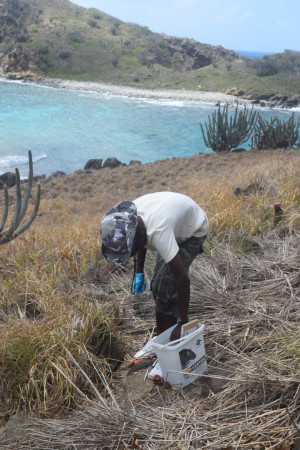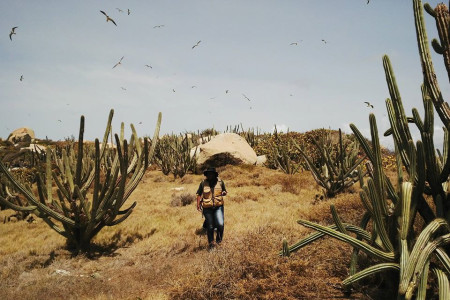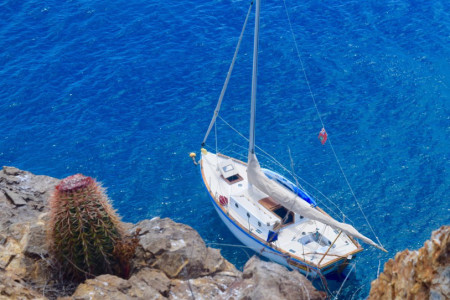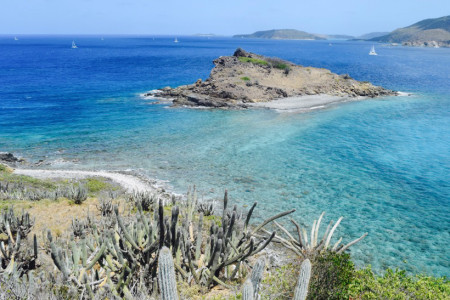
Like jewels in the sea, the tiny cays of the British Virgin Islands are scattered around the coast. These dramatically beautiful islets are not just postcard pretty – they provide habitat for some of the most important seabird colonies in the region. Seabirds are one of the most threatened groups of birds in the Caribbean and the world. They are also among the least well known, especially in the eastern Caribbean. Thus in 2015, the Jost Van Dykes (BVI) Preservation Society (JVDPS) and partners, seeking to understand and conserve our breeding seabirds, launched the BVI Seabird Recovery Planning Programme (2015-2017).
With funding from the Darwin Plus Initiative, we are surveying seabird colonies on 43 islands, assessing threats at breeding sites, exploring the use of artificial nest boxes, and writing operational plans to control invasive species such as rats that are destroying some colonies. The information we gather will be used to develop a prioritization plan for BVI-wide seabird recovery.
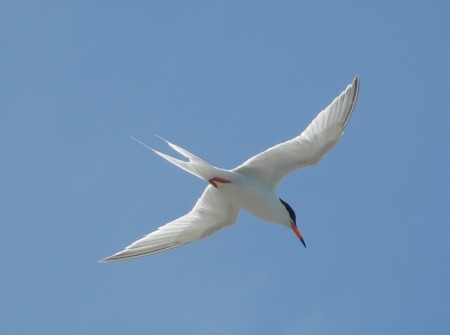
One of the BVI’s most important breeding species is the Roseate Tern, which is listed as “Threatened” by the US Department of the Interior. In the Virgin Islands, Roseate Terns nest on small, sparsely vegetated rocky cays. The tiny terns shift breeding sites annually but tend to favor a few spots. Their top choice has usually been 14-acre Green Cay, where until the late 1990s, they habitually nested in considerable numbers. In 1997, 1,755 of the approximately 2,000 total V.I. population’s nesting pairs chose the site. Sadly, as development crept its way across the BVI, rats also found Green Cay. As rats feasted on tern eggs, nest numbers dwindled. By 2015, there was no longer active nesting on the island.
Fortunately, a few small BVI colonies survive, including 2.5 acre East Seal Dog and 6.5 acre West Seal Dog Islands (which supported a few hundred breeding pairs of Roseate terns in 2014 and 2015). Although we also recorded rat predation of tern eggs on the West Seal Dog, these smaller cays provide an important refuge for Roseate Terns from which other sites might in the future be recolonized. Through this project we were able to begin collecting baseline data and working on feasibility and operational plans to rid the Seal Dog Islands of rats. In March 2016, the project carried us to the islands for winter surveys, and we recorded nesting Red-billed Tropicbird and Audubon Shearwater, further demonstrating the importance of these sites for the BVI’s breeding seabirds.
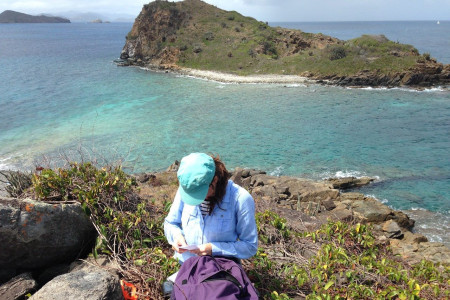
Thanks to the Darwin Plus Initiative, we were able to look at sites across the entire network of islands and cays in the BVI including many small sites that had been overlooked because of a previous focus on avian ‘hotspots’ such as the BVI’s three Important Bird Areas (IBAs): Great Tobago, Anegada and Green Cay. If our work had focused on single sites or just the IBAs, the Seal Dog Islands might have easily been overlooked. The BVI Seabird Recovery Planning Programme helped to elevate the profile of these other smaller, but also important sites.
I am happy to report that our work has resulted in new funding to control rat populations at both Seal Dog Islands and Green Cay. While Green Cay is recognized as a globally important site, rat control at the site will prove to be challenging, since it is so close to other inhabited islands that rats can swim over to and recolonize. Rat control is being carried out first at Seal Dog Islands, which will form a critical step in building our local BVI capacity to carry out small island restorations. Through lessons learnt on those cays, we will become better equipped to restore Green Cay and to identify other potential sites for similar conservation actions throughout the Territory.
The BVI Seabird Recovery Programme is led by Roehampton University and organized locally in the BVI by the Jost Van Dykes (BVI) Preservation Society. Other partners include the Royal Society for the Protection of Birds, the National Parks Trust of the Virgin Islands and the BVI Conservation & Fisheries Department. We are also grateful to BirdsCaribbean for the many ways in which their seabird capacity-building and training workshops (funded in part through the National Fish and Wildlife Foundation) and the Seabird Working Group network have helped to provide us with access to technical experts, opportunities for skills-building and materials (such as the nestboxes for tropicbirds) to directly benefit this project.
By Susan Zaluski, Director, Jost Van Dykes (BVI) Preservation Society.
